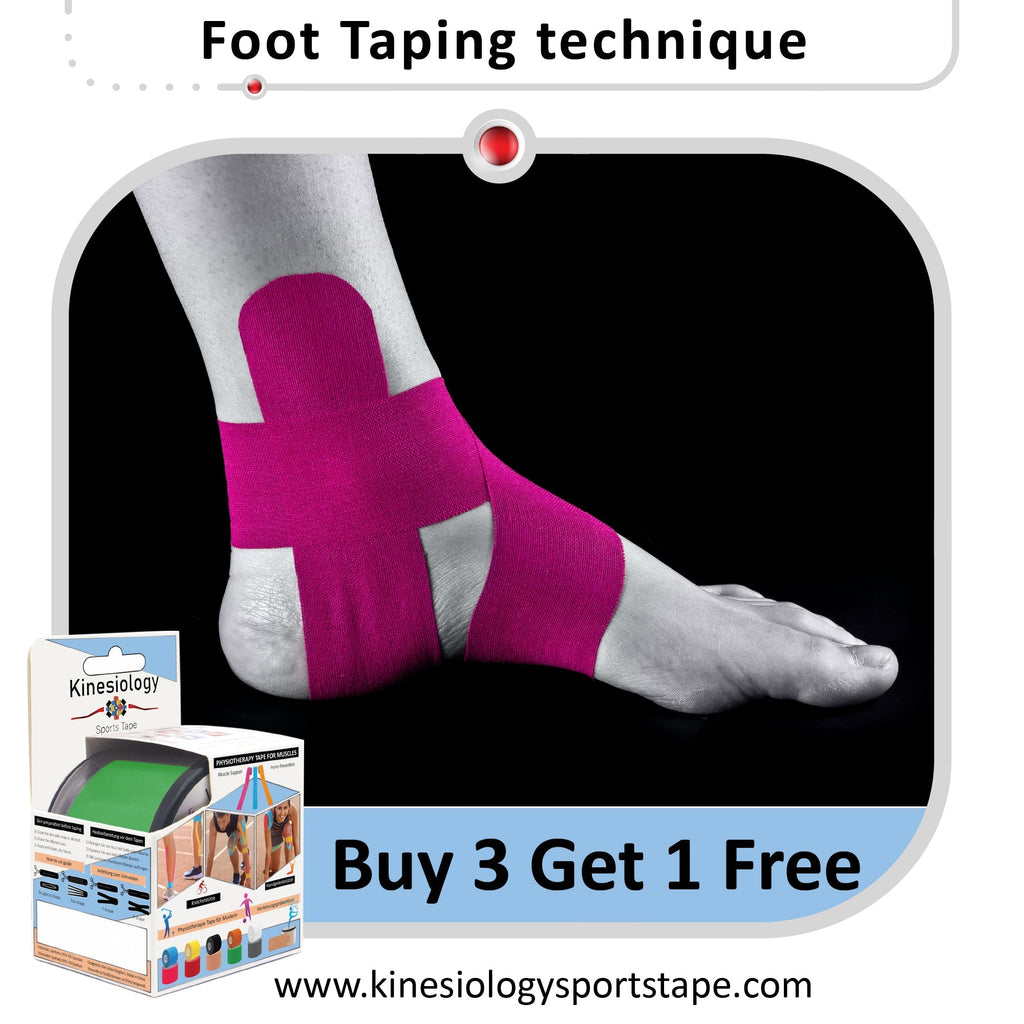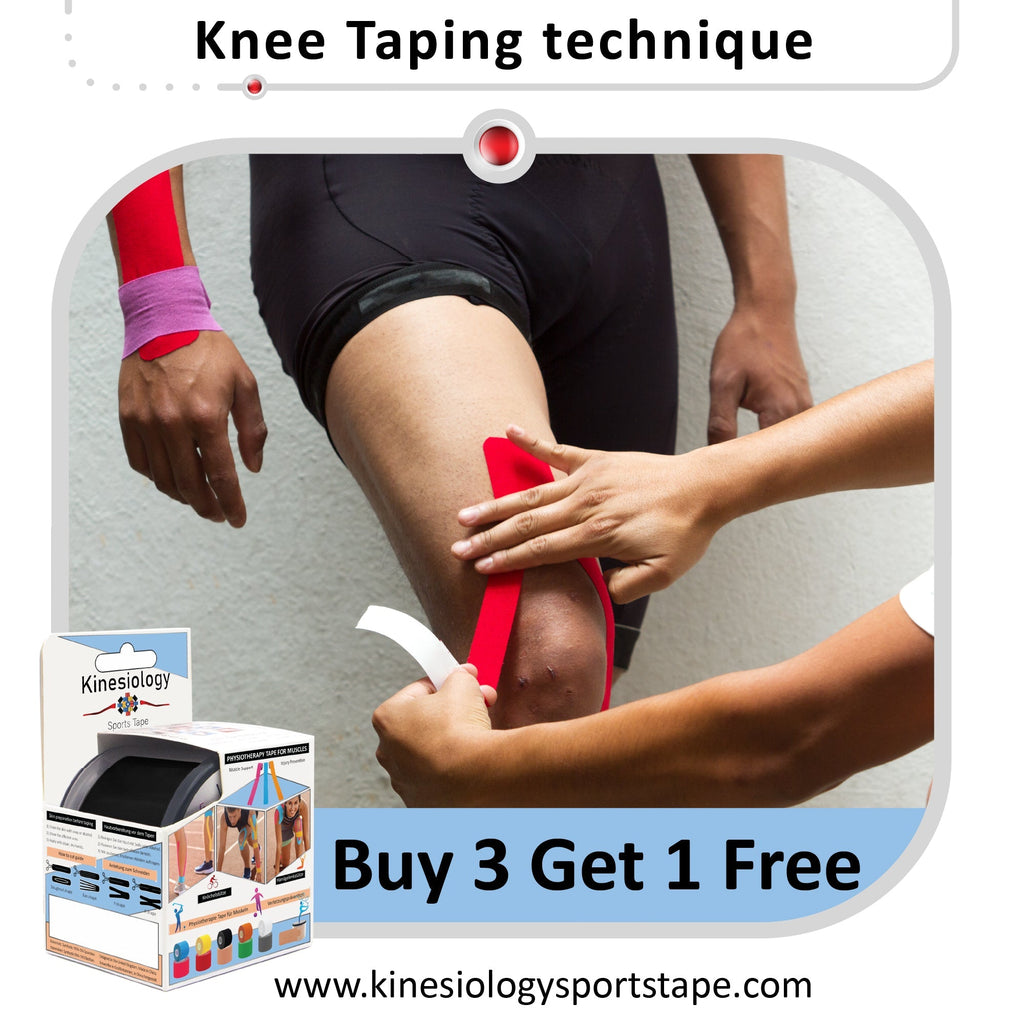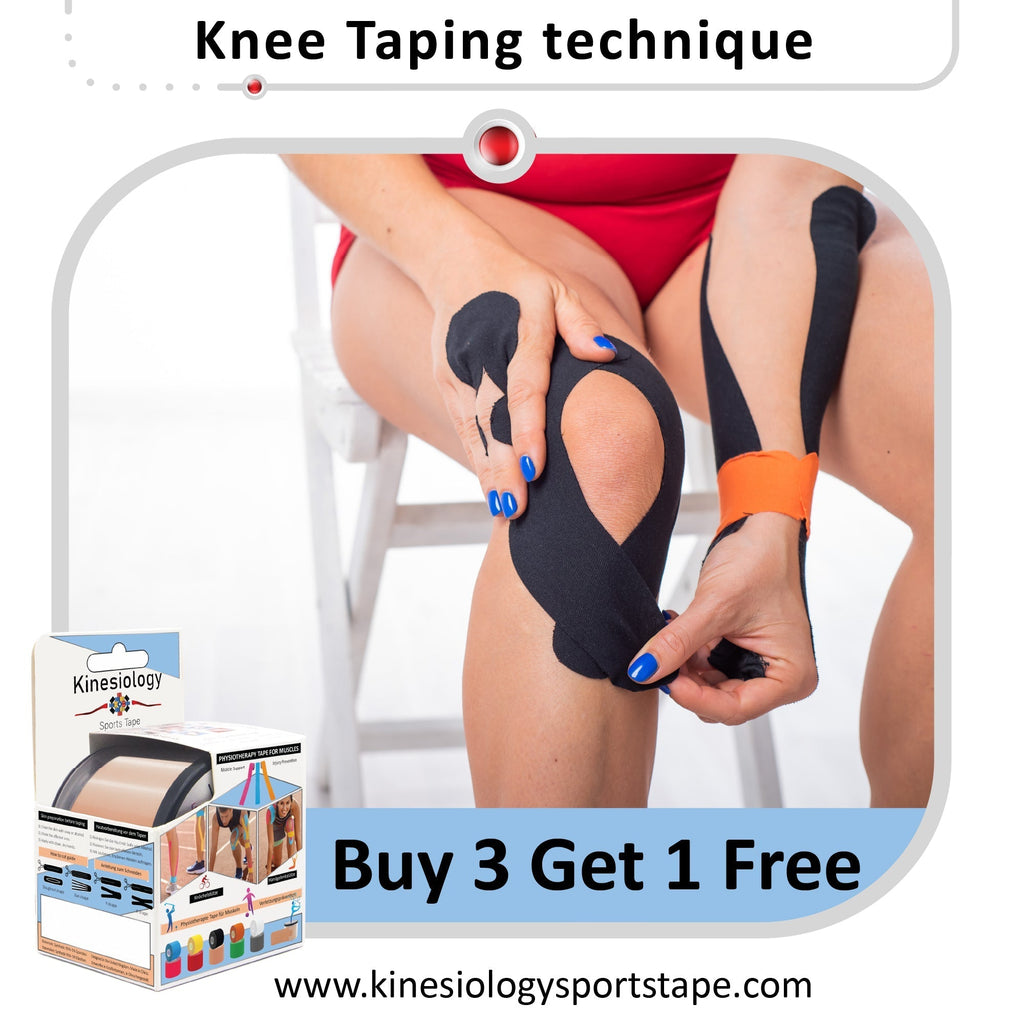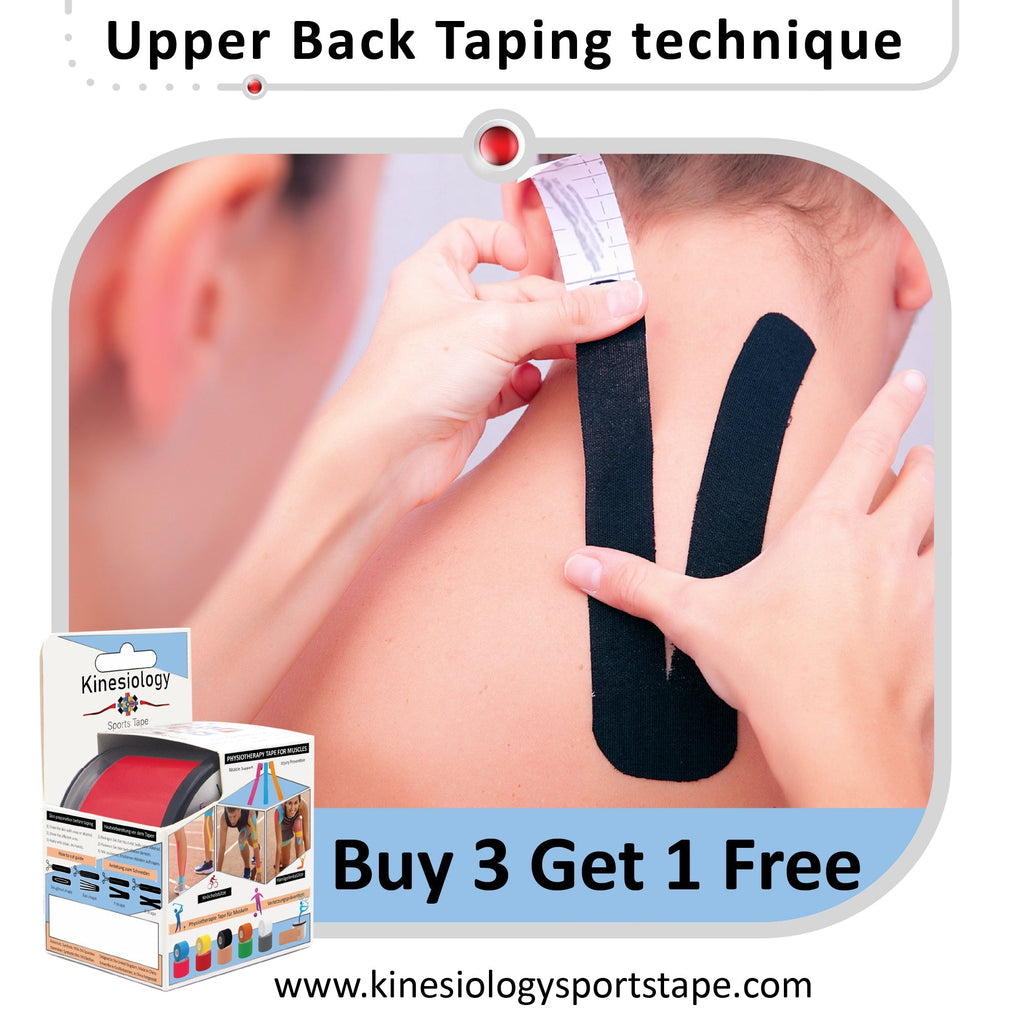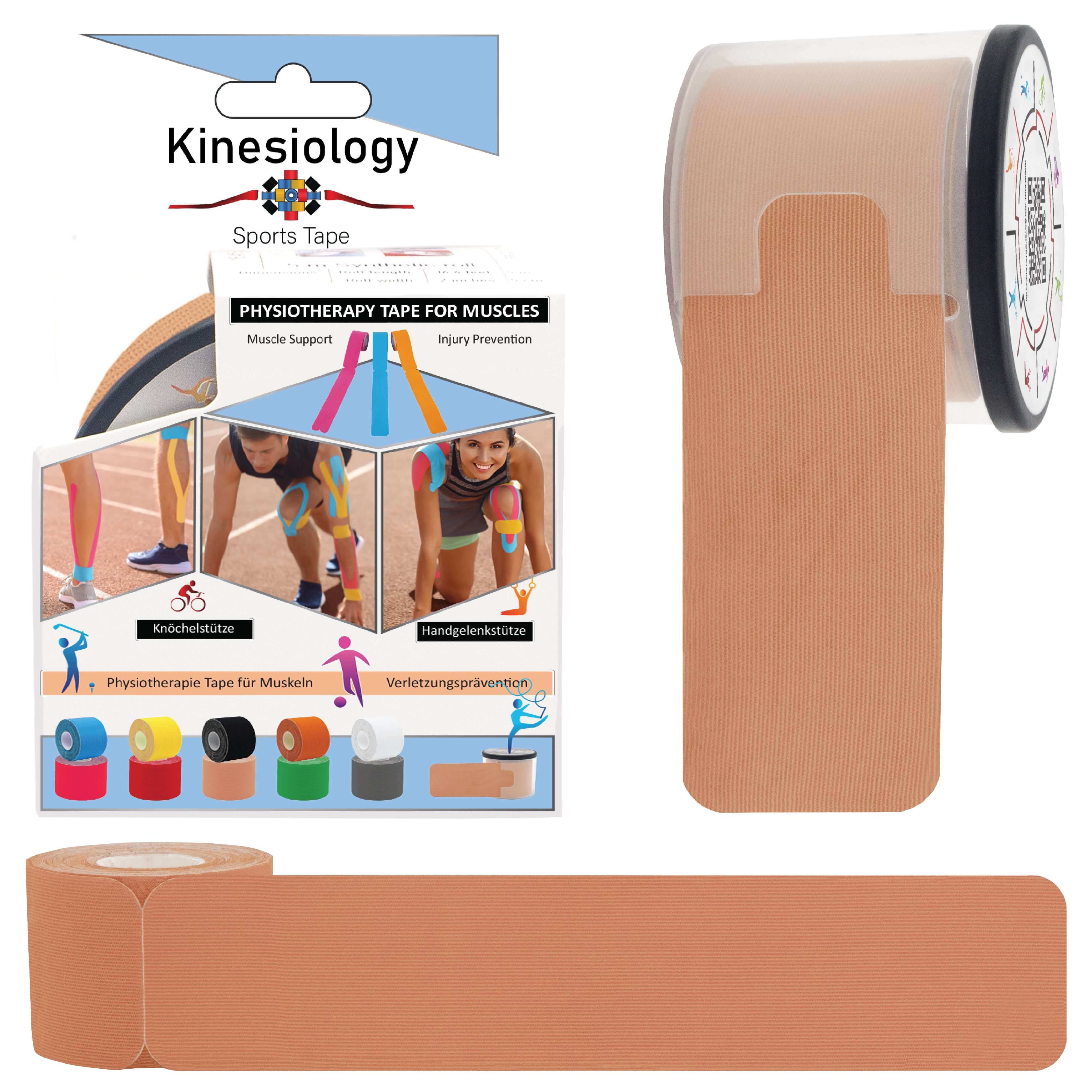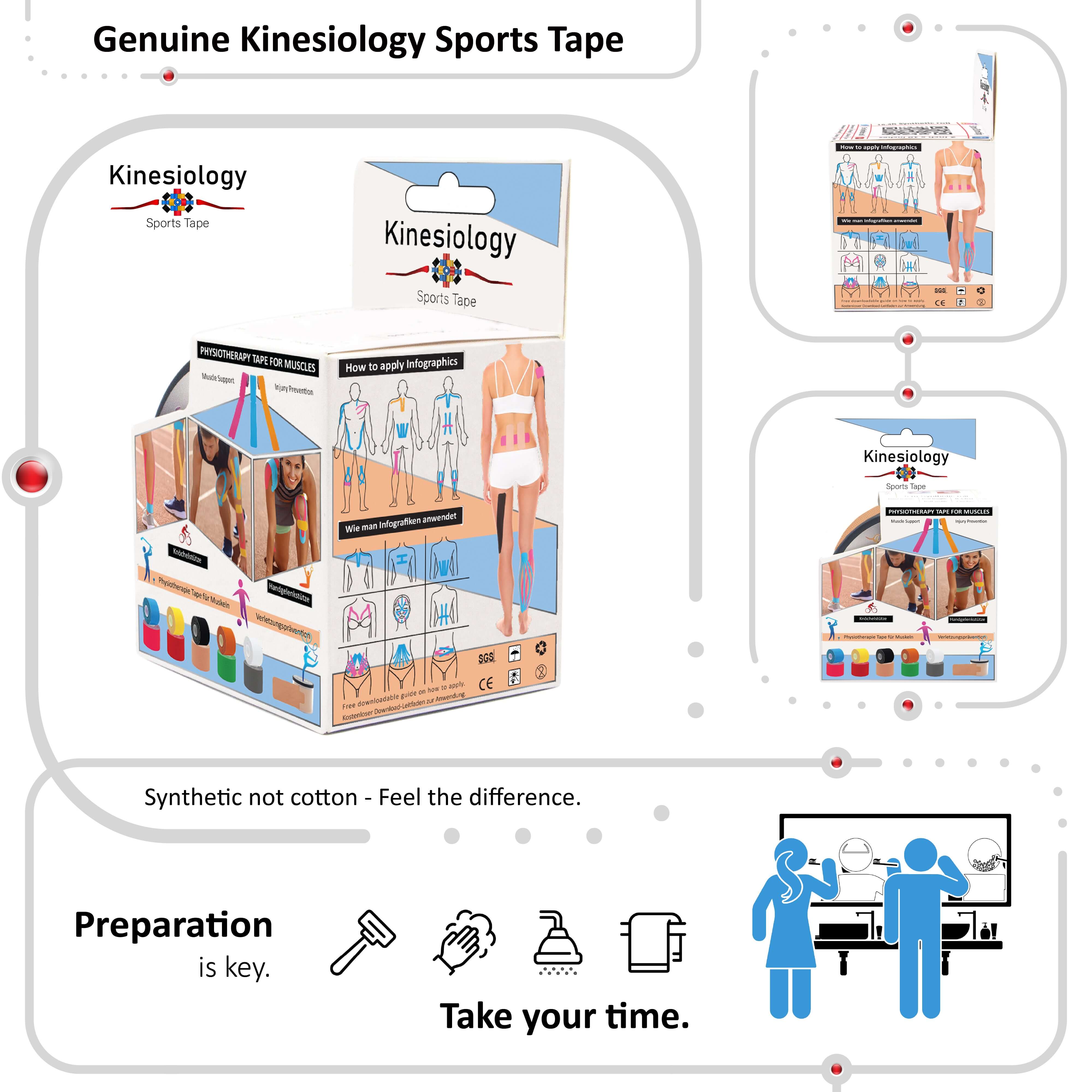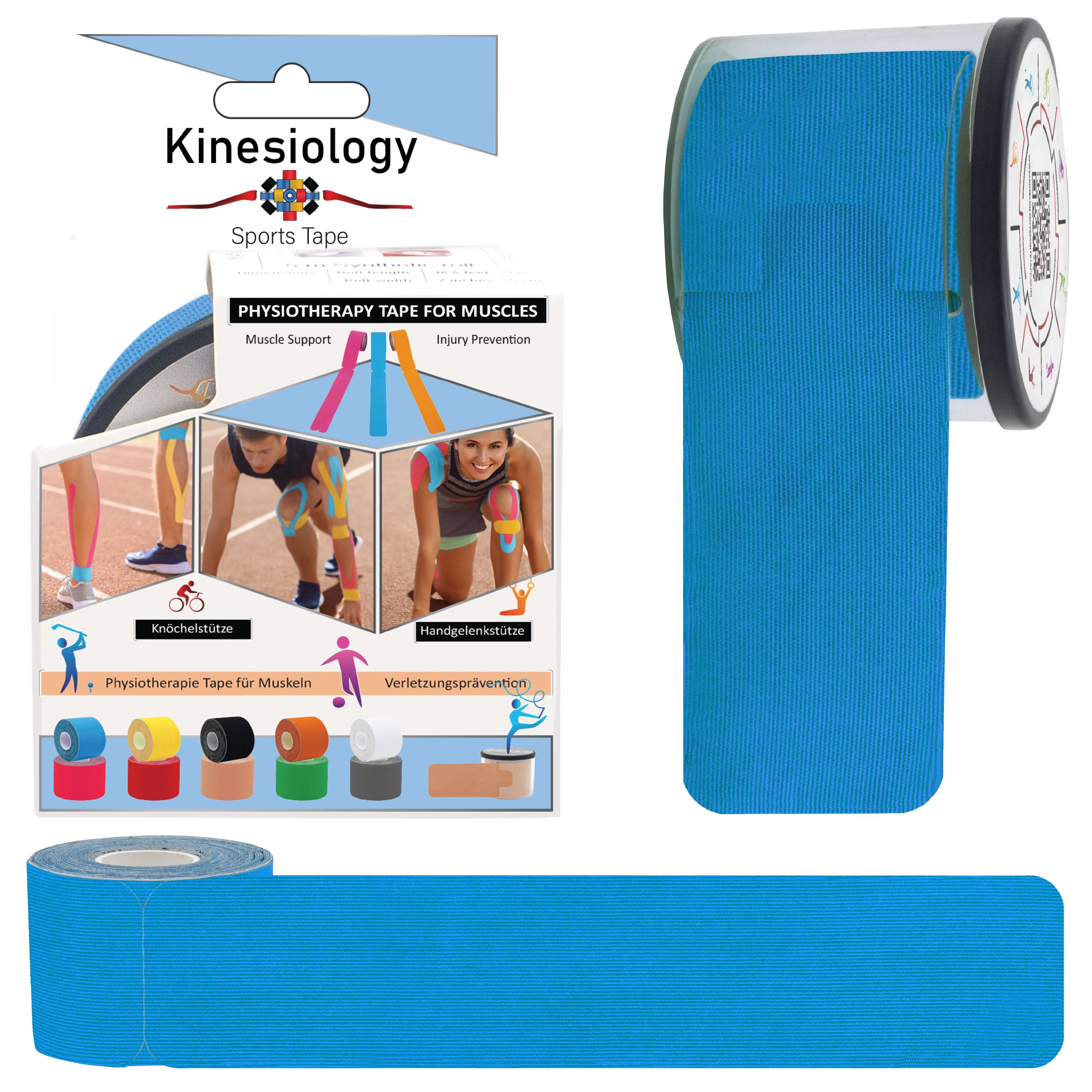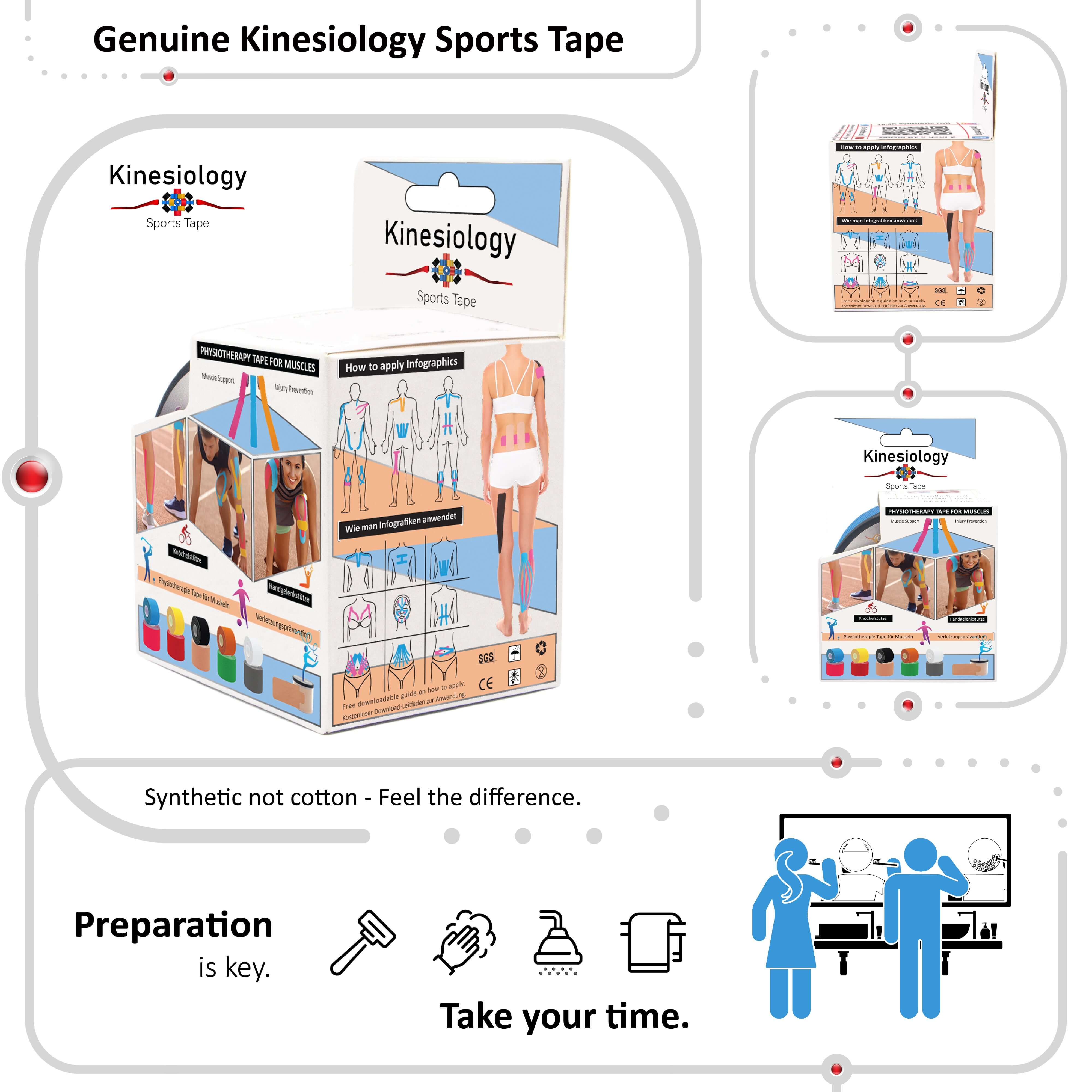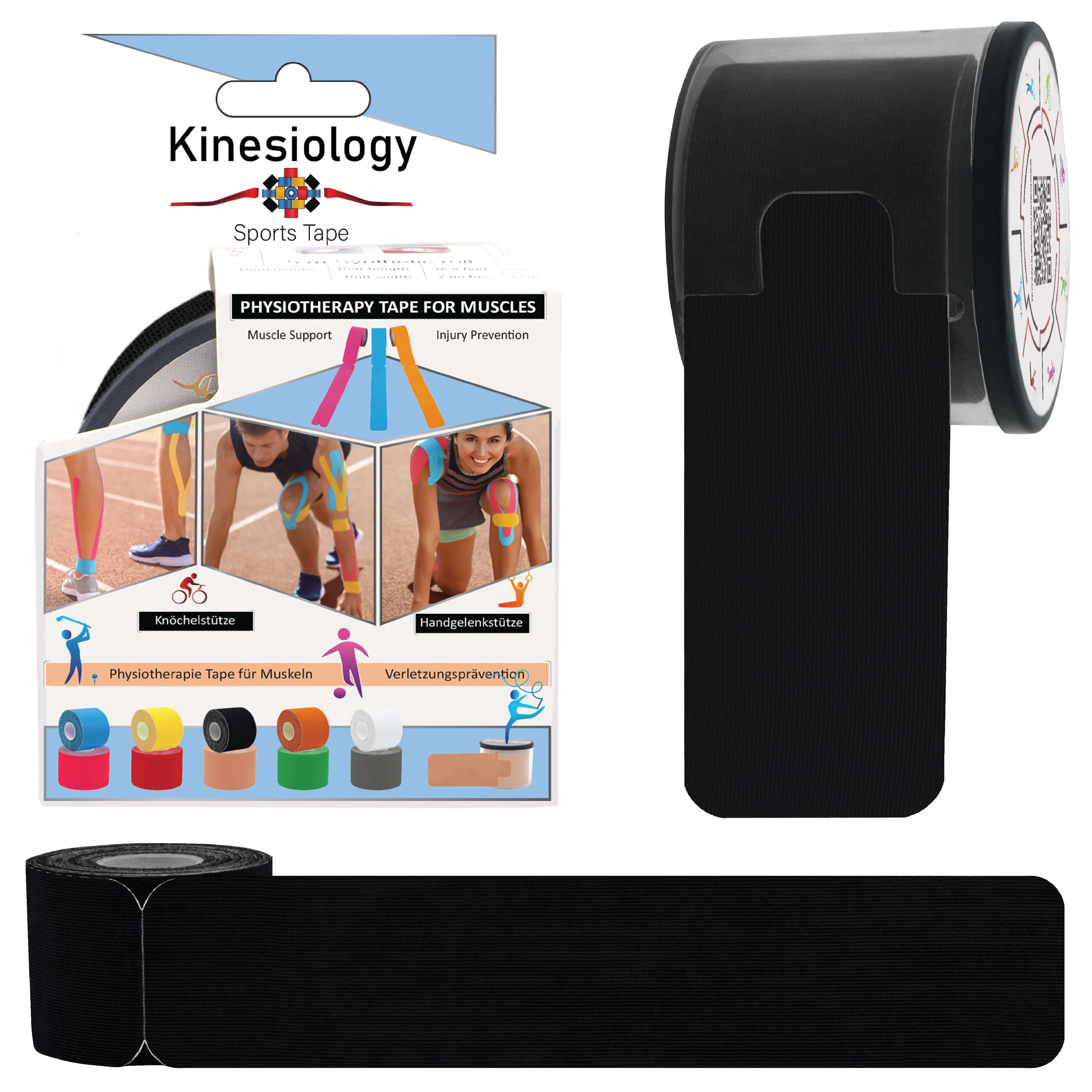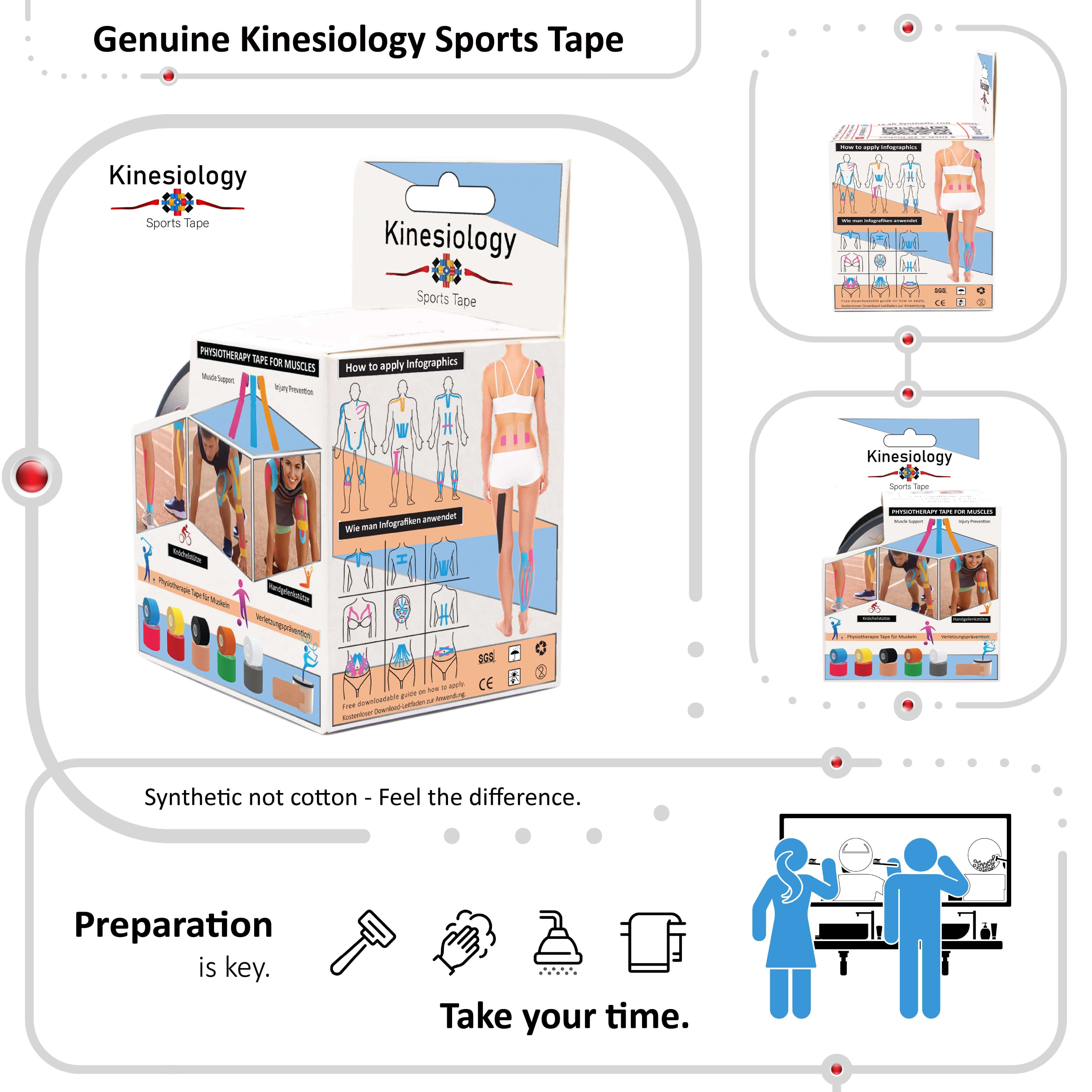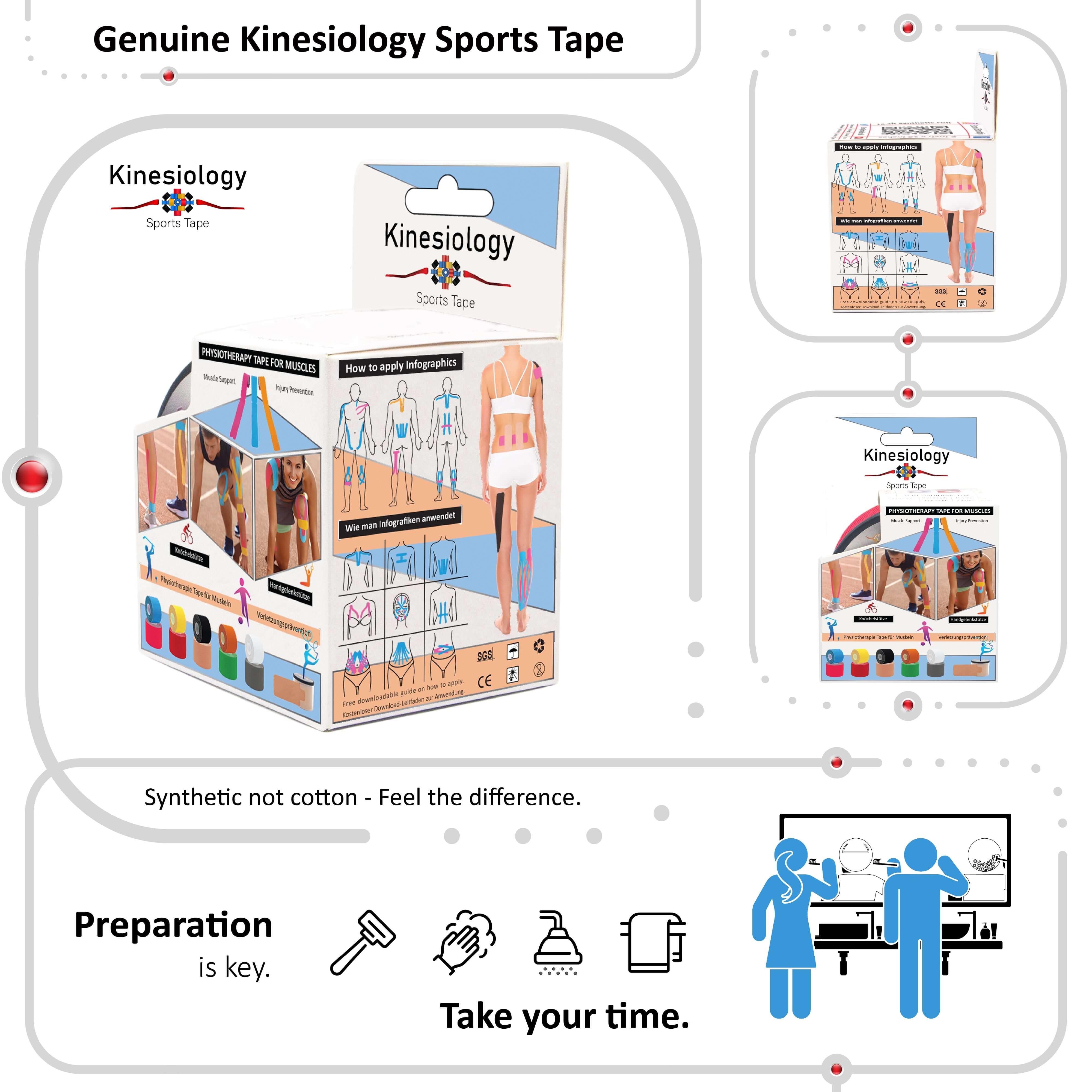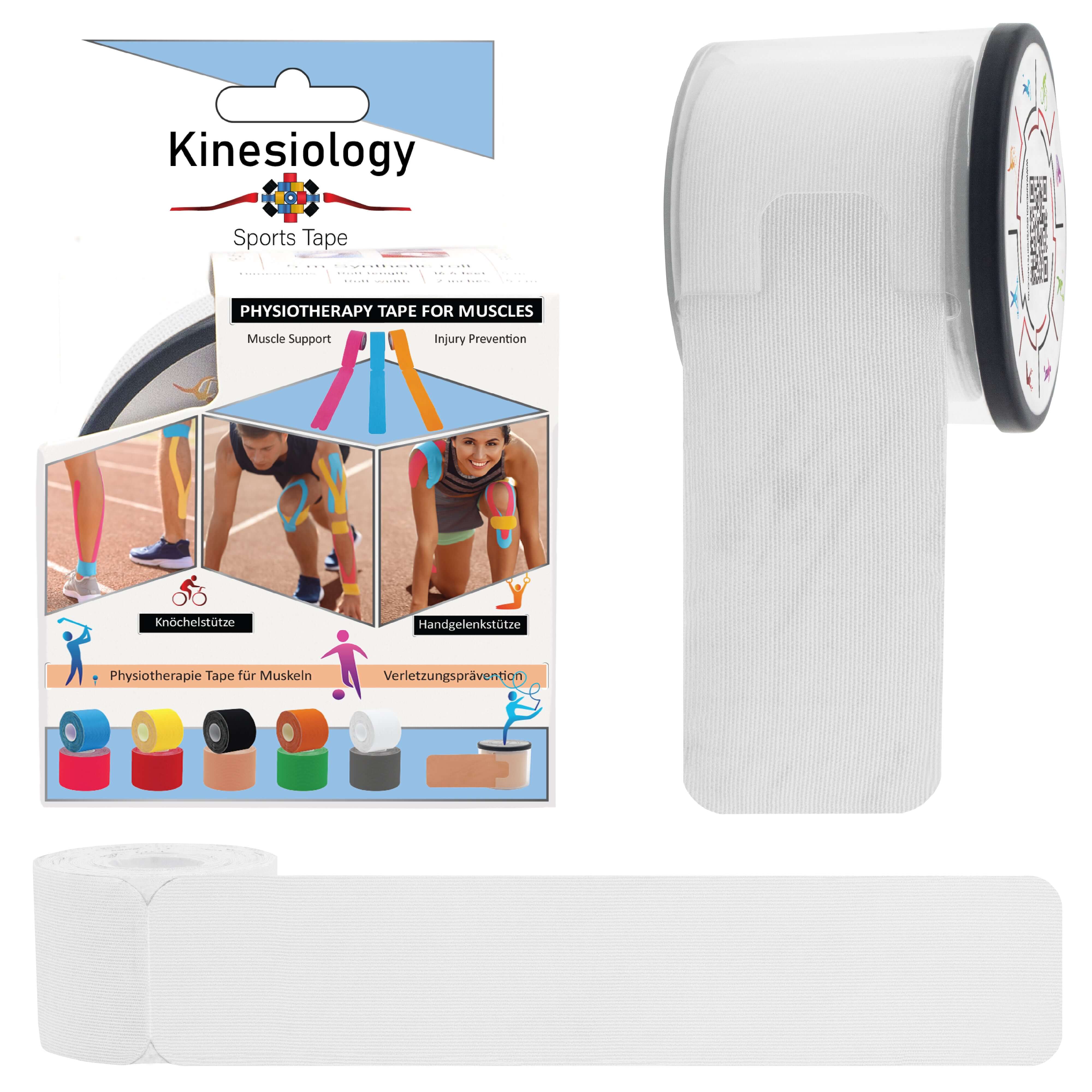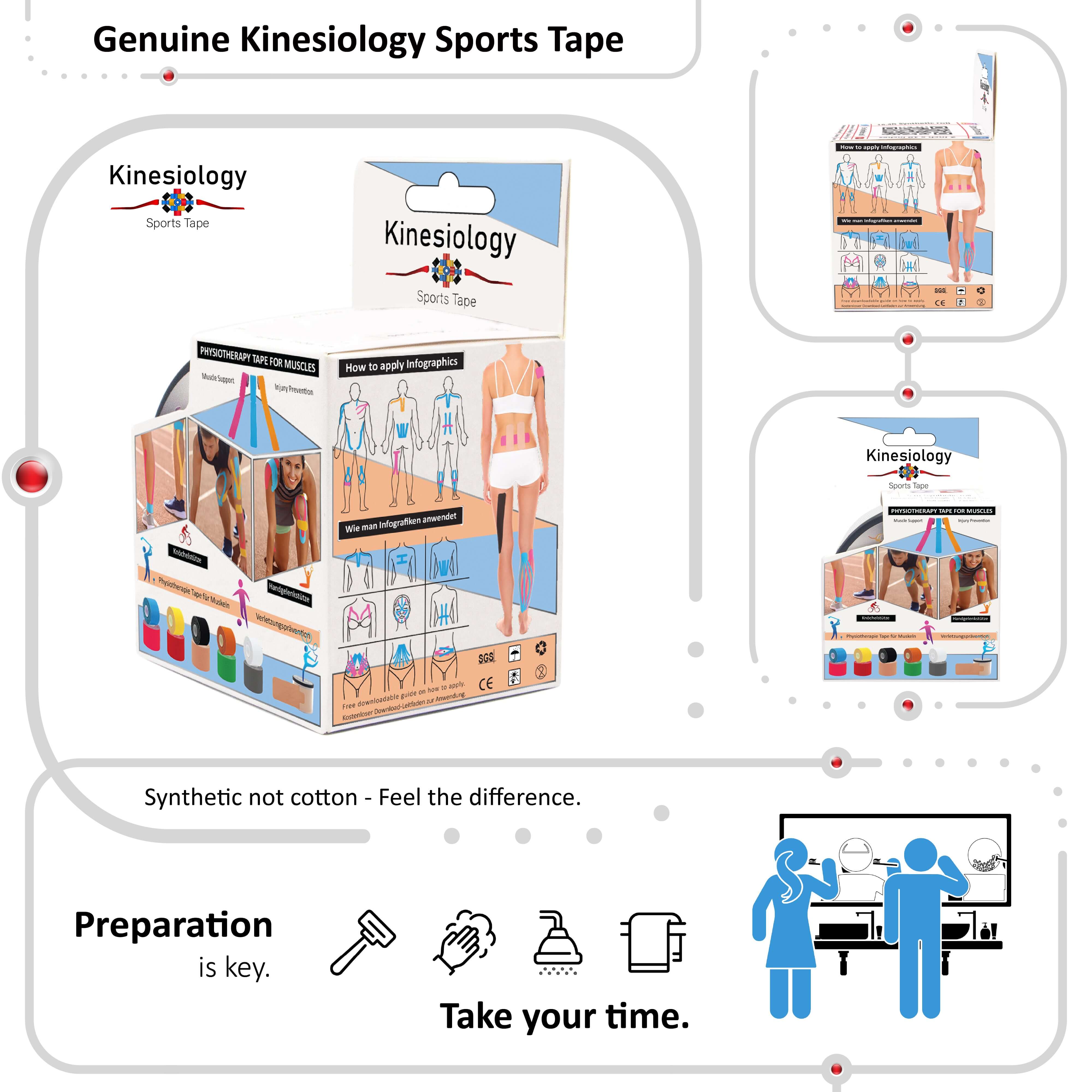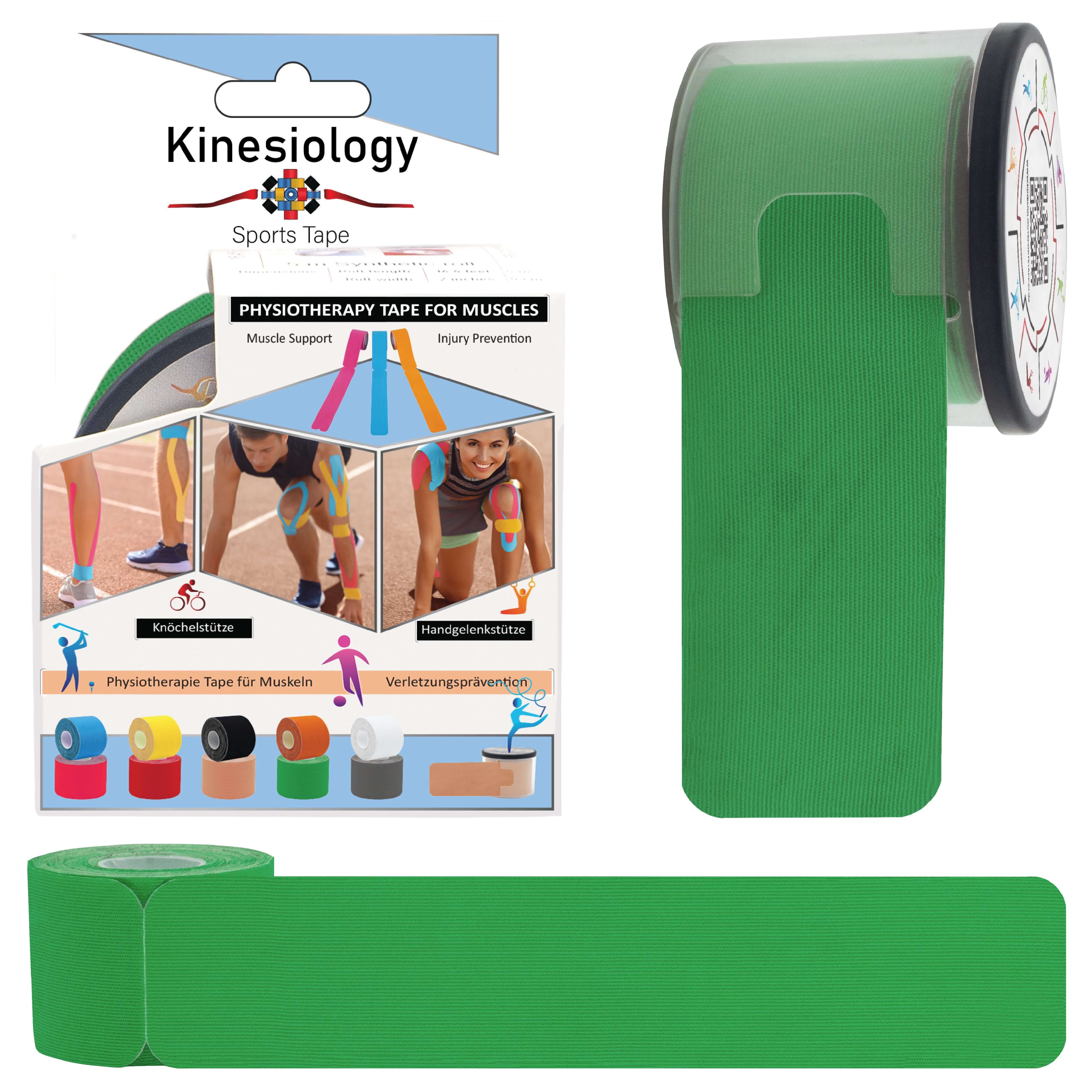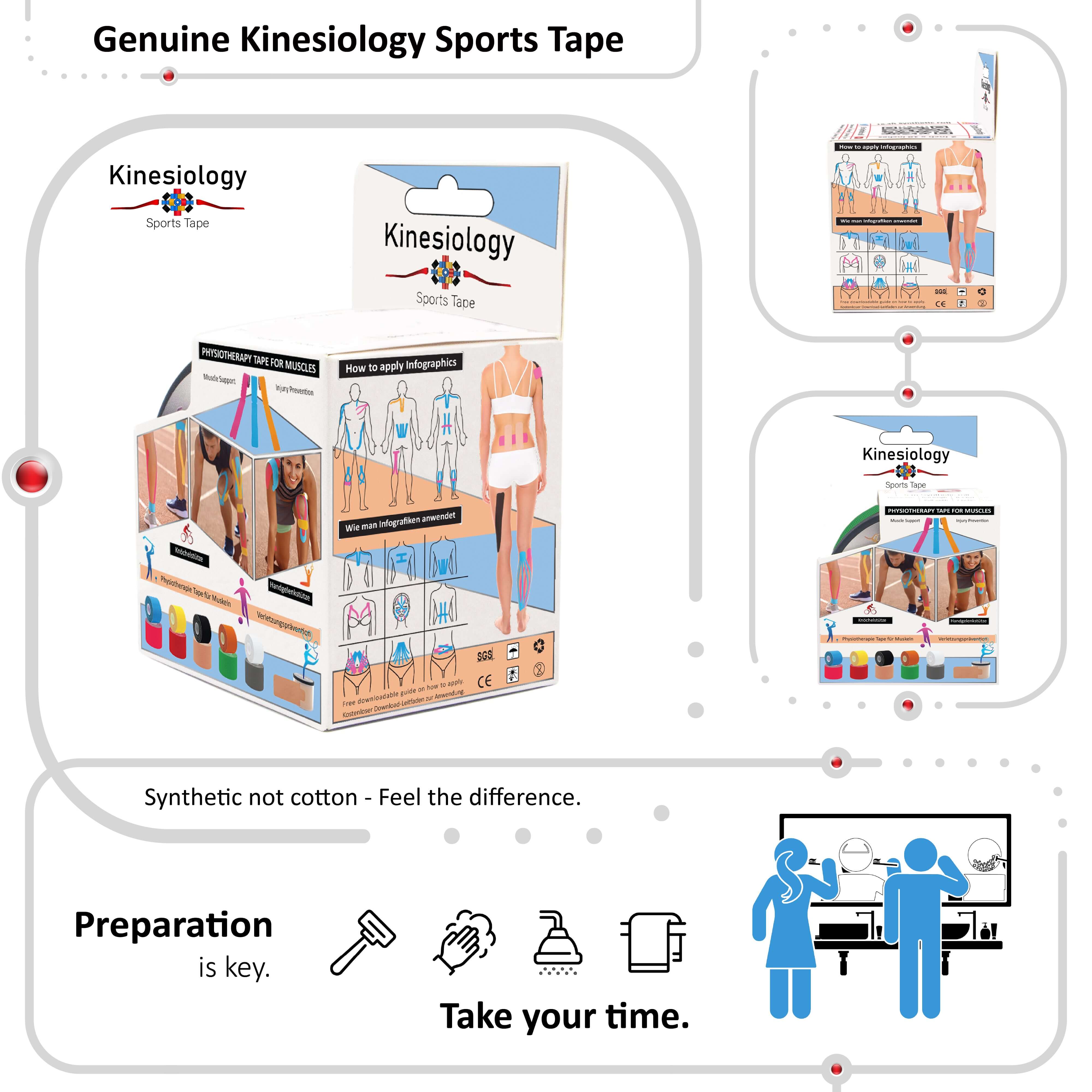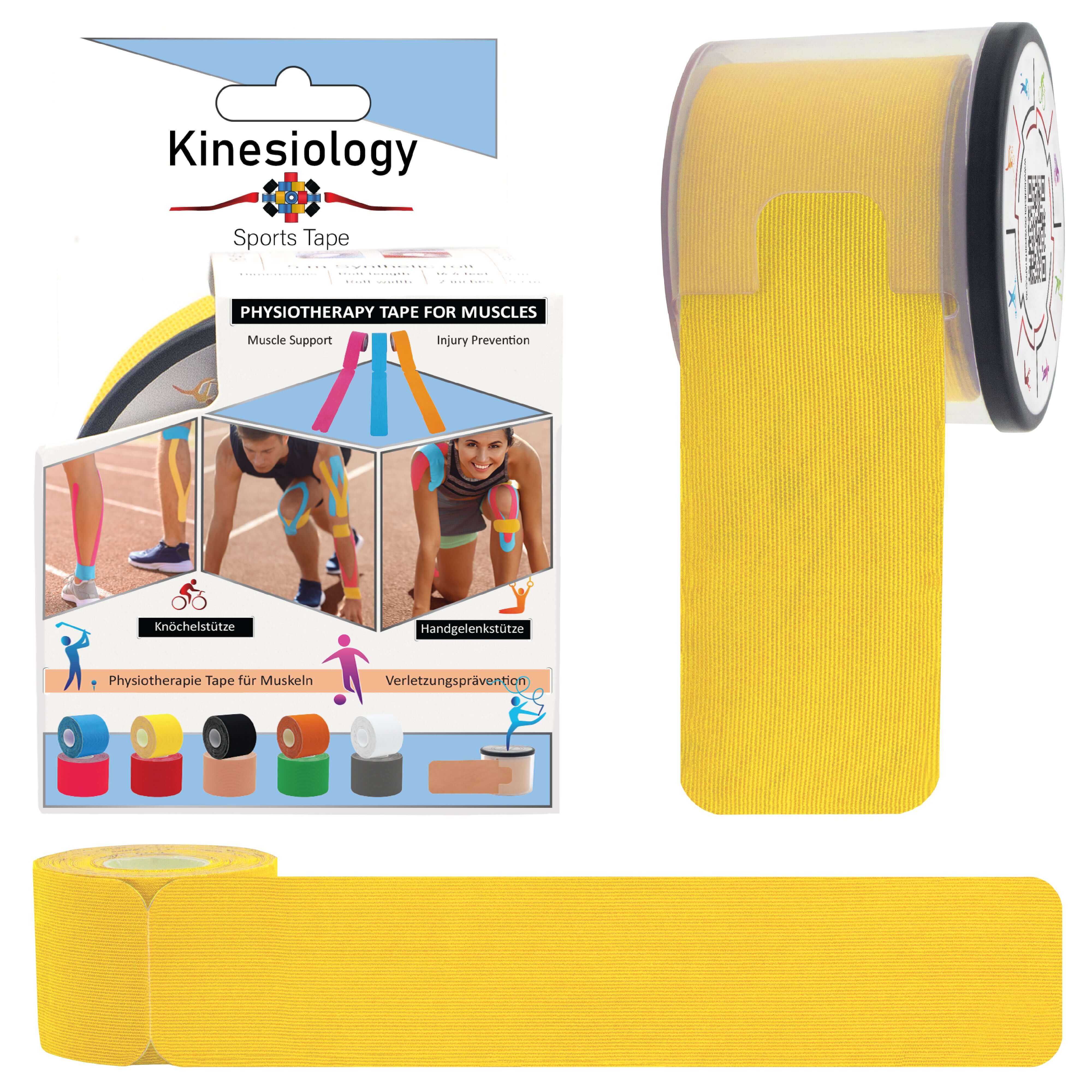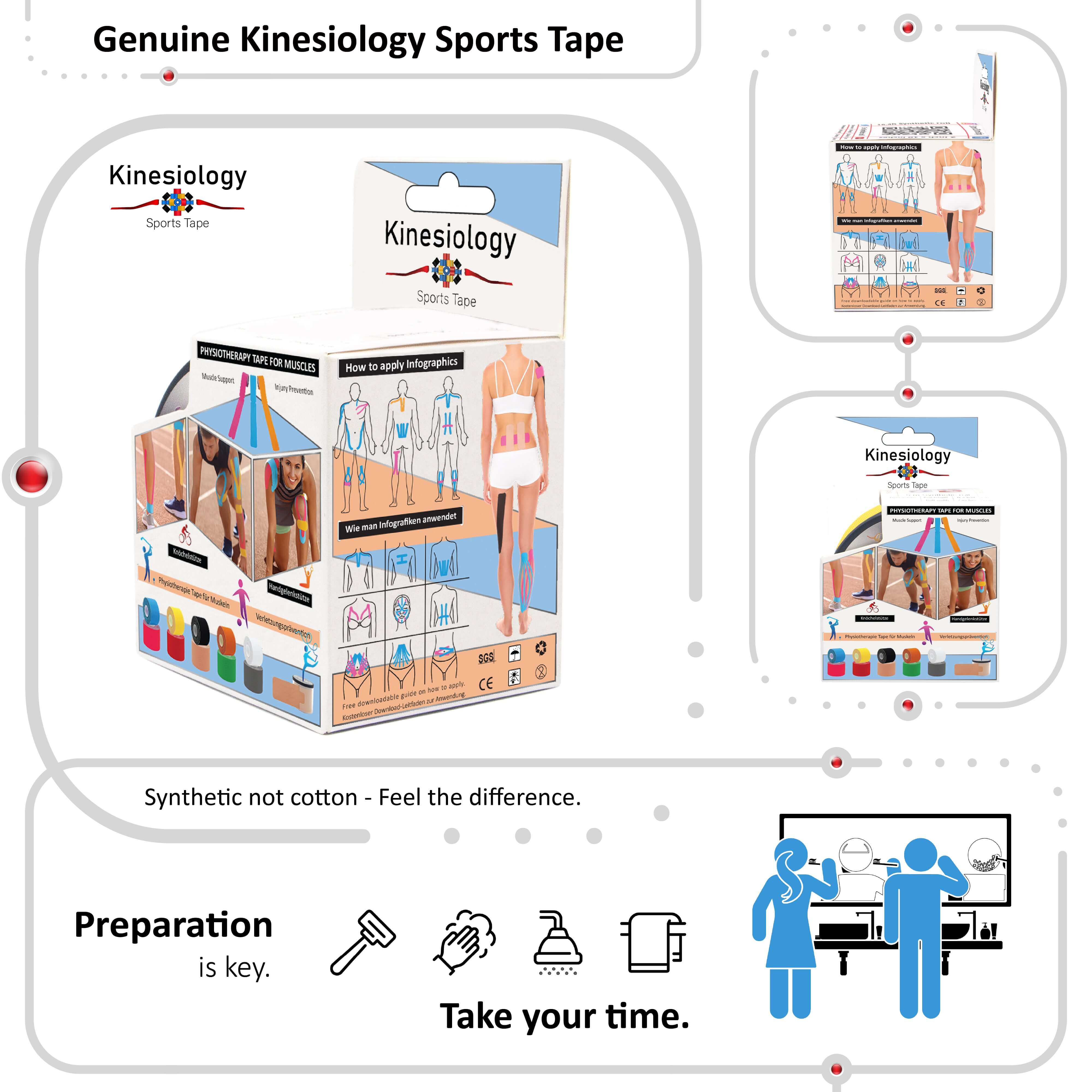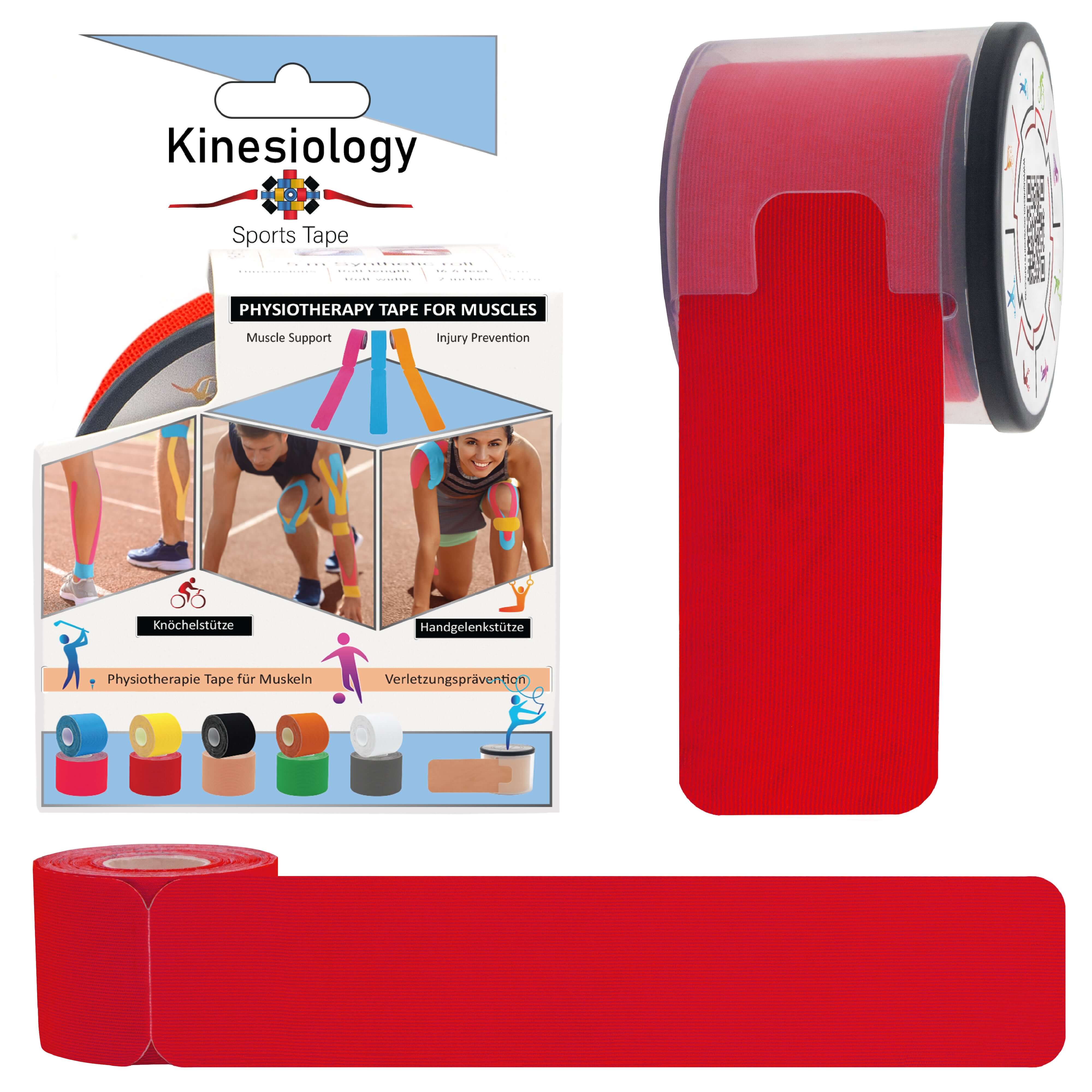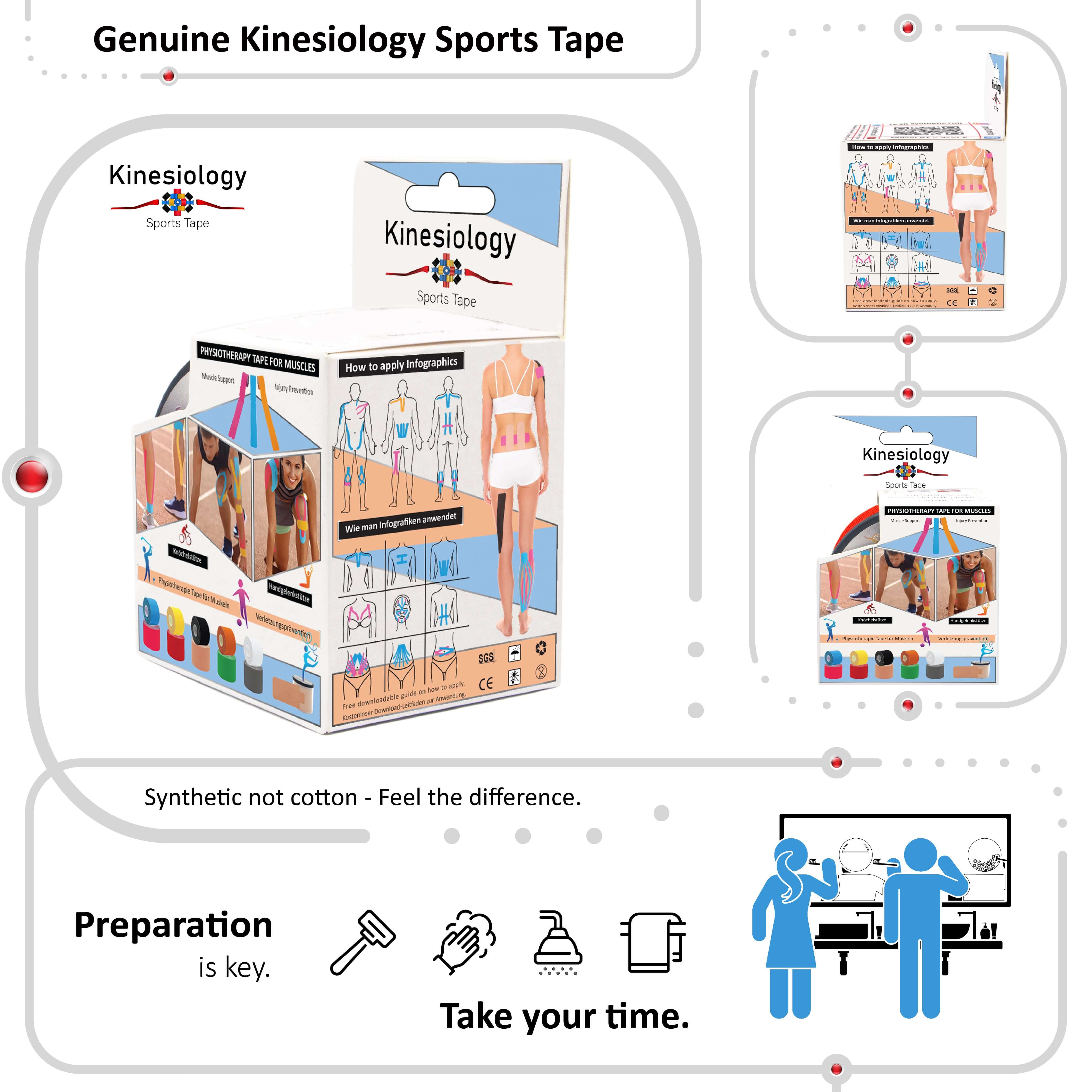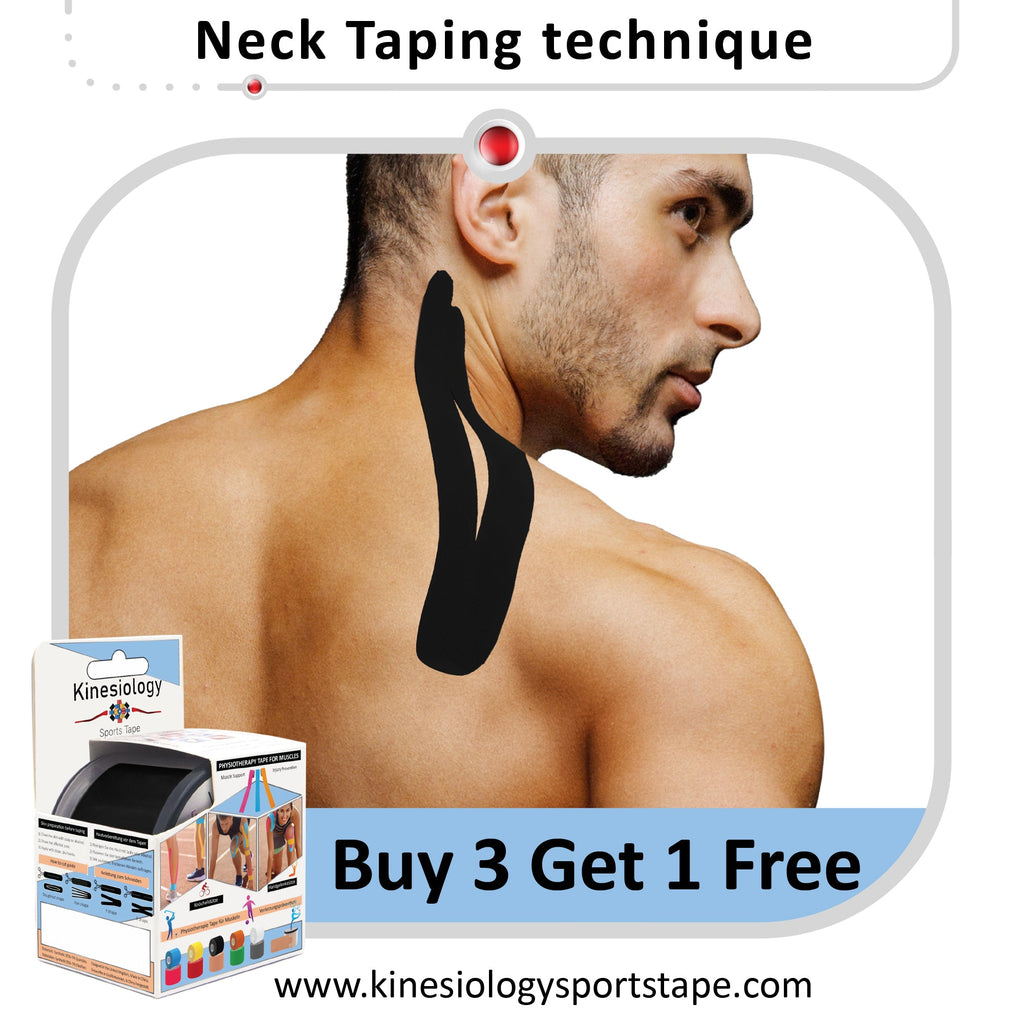
Kinesiology Tape vs Athletic Tape: Which Should You Choose for Optimal Support and Recovery

The world of therapeutic taping has evolved significantly over the past several decades, with various types of tape designed to address different needs and applications. Two of the most commonly used taping methods are kinesiology tape and traditional athletic tape, each offering distinct advantages and serving different purposes in injury prevention, treatment, and performance enhancement [1]. Understanding the fundamental differences between these taping approaches is crucial for athletes, healthcare providers, and individuals seeking the most appropriate support for their specific needs.
The choice between kinesiology tape and athletic tape often depends on the specific goals of the application, the nature of the injury or condition being addressed, and the individual's activity requirements [2]. While both types of tape can provide valuable therapeutic benefits, their mechanisms of action, application techniques, and intended outcomes differ significantly. This comprehensive comparison will help you make informed decisions about which taping method is most appropriate for your specific situation.
Kinesiology tape, developed in the 1970s by Japanese chiropractor Dr. Kenzo Kase, represents a revolutionary approach to therapeutic taping that emphasizes movement facilitation and natural healing processes [3]. In contrast, traditional athletic tape has been used for decades to provide rigid support and movement restriction, primarily focusing on injury prevention and joint stabilization during athletic activities.
The growing popularity of kinesiology tape in recent years has led to increased interest in understanding how it compares to traditional athletic taping methods [4]. Research has shown that each approach has distinct advantages and limitations, making the choice between them dependent on specific circumstances and treatment goals. This detailed comparison will explore the science, applications, and practical considerations of both taping methods to help you determine which approach is best suited for your needs.
Fundamental Differences in Design and Materials
The most obvious difference between kinesiology tape and athletic tape lies in their physical properties and construction materials. Kinesiology tape is made from a cotton-based fabric with an acrylic adhesive that mimics the elasticity and thickness of human skin [5]. This design allows the tape to stretch up to 140% of its original length, providing dynamic support that moves with the body rather than restricting it.
The wave-like adhesive pattern on kinesiology tape is specifically designed to enhance lifting effects and promote air circulation. This undulating pattern allows for better moisture management and skin breathability while maintaining strong adhesion [6]. The tape's thickness closely matches that of human skin, creating a more natural feel and reducing the sensation of having tape applied to the body.
Traditional athletic tape, in contrast, is typically made from cotton or synthetic materials with a zinc oxide-based adhesive that provides strong, rigid support [7]. This tape is designed to be non-elastic or minimally elastic, with the primary goal of restricting movement and providing mechanical support to joints and soft tissues. The adhesive is usually applied uniformly across the tape's surface, creating a strong bond that can withstand significant forces.
The durability and wear time of these tapes also differ significantly. Kinesiology tape is designed to be worn for 3-5 days continuously, maintaining its therapeutic effects throughout this period [8]. Its water-resistant properties allow for showering and light swimming while wearing the tape. Athletic tape, however, is typically applied immediately before activity and removed afterward, with wear times rarely exceeding 24 hours.
The application process for each type of tape requires different techniques and considerations. Kinesiology tape application involves specific tension percentages, directional considerations, and anchor placement techniques that differ significantly from athletic taping methods [9]. Athletic tape application focuses on creating rigid support structures through overlapping layers and specific wrapping patterns that limit joint range of motion.
Mechanisms of Action and Therapeutic Effects
The therapeutic mechanisms of kinesiology tape and athletic tape operate through fundamentally different pathways, leading to distinct therapeutic outcomes and applications [10]. Understanding these mechanisms is crucial for selecting the appropriate taping method for specific conditions and goals.
Kinesiology tape works primarily through neurological and circulatory mechanisms. When properly applied, the tape stimulates cutaneous mechanoreceptors in the skin, providing enhanced sensory feedback to the central nervous system [11]. This increased sensory input can improve motor control, enhance proprioception, and modulate pain through the gate control mechanism. The tape's lifting effect on the skin increases subcutaneous space, promoting better circulation and lymphatic drainage.
The elastic properties of kinesiology tape allow it to provide dynamic support that assists muscle function while maintaining full range of motion [12]. This support can help facilitate weak muscles, inhibit overactive muscles, and provide subtle guidance for proper movement patterns. The tape's ability to maintain its effects over several days allows for continuous therapeutic input throughout the healing process.
Athletic tape operates primarily through mechanical mechanisms, providing rigid support that limits joint movement and reduces stress on injured structures [13]. This mechanical support is particularly valuable for acute injuries where movement restriction is necessary to prevent further damage. The tape creates external support that can substitute for compromised ligaments or provide additional stability to unstable joints.
The immediate support provided by athletic tape can allow athletes to continue participation in activities that might otherwise be impossible due to injury [14]. However, this support comes at the cost of reduced range of motion and potential interference with normal movement patterns. The rigid nature of athletic tape makes it less suitable for conditions where movement facilitation is desired.
Pain relief mechanisms also differ between the two taping methods. Kinesiology tape provides pain relief through sensory modulation and improved circulation, while athletic tape reduces pain primarily by limiting movement of painful structures [15]. Both approaches can be effective for pain management, but the choice depends on whether movement restriction or movement facilitation is more appropriate for the specific condition.
Clinical Applications and Condition-Specific Uses
The choice between kinesiology tape and athletic tape often depends on the specific condition being treated and the goals of the intervention [16]. Each taping method has particular strengths that make it more suitable for certain applications.
Kinesiology tape excels in applications where movement facilitation, muscle re-education, and long-term support are desired. It is particularly effective for conditions involving muscle weakness, movement dysfunction, or chronic pain [17]. The tape's ability to provide support while maintaining range of motion makes it ideal for rehabilitation settings where gradual return to function is the goal.
Chronic conditions such as patellofemoral pain syndrome, plantar fasciitis, and rotator cuff tendinopathy often respond well to kinesiology tape applications [18]. The tape's ability to provide continuous support over several days while promoting healing makes it particularly valuable for these persistent conditions. Additionally, kinesiology tape is excellent for addressing muscle imbalances and movement pattern dysfunctions that often contribute to chronic pain.
Athletic tape is most appropriate for acute injuries where movement restriction and immediate mechanical support are necessary [19]. Ankle sprains, wrist injuries, and finger injuries commonly benefit from athletic tape applications that provide rigid support and prevent harmful movements. The tape's ability to create strong, immediate support makes it invaluable in sports settings where athletes need to continue participation despite minor injuries.
Prophylactic taping, or preventive taping applied before activity to prevent injury, is another area where athletic tape traditionally excels [20]. The rigid support provided by athletic tape can help prevent ankle sprains, wrist injuries, and other common sports injuries by limiting movement to safe ranges. However, recent research has shown that kinesiology tape may also be effective for injury prevention through enhanced proprioception and movement awareness.
Post-surgical applications require careful consideration of the specific surgical procedure and healing requirements. Kinesiology tape may be appropriate for supporting healing tissues while maintaining some movement, while athletic tape might be necessary when rigid immobilization is required [21]. The choice should always be made in consultation with the surgical team and rehabilitation professionals.
Performance and Athletic Considerations
The impact of taping choice on athletic performance is a crucial consideration for competitive athletes and active individuals [22]. Each taping method affects performance differently, with implications for strength, endurance, agility, and overall movement quality.
Kinesiology tape's ability to maintain full range of motion while providing support makes it particularly attractive for athletes who cannot afford to have their movement restricted [23]. Research has shown that kinesiology tape can enhance muscle activation, improve proprioception, and reduce fatigue without significantly impacting performance measures. This makes it suitable for use during training and competition in most sports.
The psychological benefits of kinesiology tape should not be underestimated in athletic populations. The visible presence of the tape can provide athletes with increased confidence and a sense of support that may translate to improved performance [24]. This placebo effect, while not diminishing the tape's physiological benefits, adds an additional layer of performance enhancement.
Athletic tape's movement restriction can significantly impact athletic performance, particularly in sports requiring full range of motion [25]. While the rigid support may be necessary for injury protection, it can reduce power output, limit agility, and interfere with sport-specific movement patterns. This trade-off between protection and performance must be carefully considered in competitive settings.
The durability requirements for athletic taping in sports settings often favor athletic tape for high-intensity, short-duration activities [26]. The strong adhesion and rigid support of athletic tape can withstand the forces generated during intense athletic activities better than kinesiology tape in some situations. However, kinesiology tape's longer wear time makes it more practical for training periods and multi-day competitions.
Environmental factors such as heat, humidity, and water exposure can affect both types of tape differently. Kinesiology tape's water-resistant properties make it more suitable for activities involving sweat or water exposure [27]. Athletic tape may require more frequent reapplication in challenging environmental conditions.
Cost-Effectiveness and Practical Considerations
The economic aspects of taping choice involve not only the initial cost of materials but also factors such as application time, wear duration, and overall effectiveness [28]. These practical considerations often influence the choice between kinesiology tape and athletic tape in various settings.
Kinesiology tape typically costs more per application than athletic tape, but its longer wear time can make it more cost-effective over time [29]. A single application of kinesiology tape that lasts 3-5 days may be more economical than multiple applications of athletic tape over the same period. This is particularly relevant for individuals requiring ongoing support for chronic conditions.
The application time and skill requirements differ significantly between the two taping methods. Athletic tape application is generally faster and requires less specialized training, making it more practical in busy clinical or athletic settings [30]. Kinesiology tape application requires more detailed knowledge of anatomy, biomechanics, and specific application techniques, potentially requiring additional training for healthcare providers.
The need for professional application versus self-application is another important consideration. While both types of tape can be self-applied for some applications, kinesiology tape's complexity often makes professional application preferable for optimal results [31]. Athletic tape's more straightforward application techniques may be more suitable for self-application in emergency or field situations.
Storage and shelf life considerations may also influence tape choice. Kinesiology tape generally has a longer shelf life and is less sensitive to storage conditions than some athletic tapes [32]. This can be important for individuals who need to maintain tape supplies for extended periods or in various environmental conditions.
The availability of pre-cut applications has made kinesiology tape more accessible to consumers, potentially reducing the need for professional application in some cases [33]. These pre-cut applications can provide cost savings and convenience while ensuring proper tape placement for common conditions.
Safety Considerations and Contraindications
Both kinesiology tape and athletic tape have specific safety considerations and contraindications that must be understood to ensure safe and effective use [34]. While both are generally safe when used appropriately, certain conditions and circumstances may make one option preferable over the other.
Skin sensitivity and allergic reactions are potential concerns with both types of tape, but the risk profiles differ [35]. Kinesiology tape's acrylic adhesive is generally well-tolerated and hypoallergenic, but some individuals may still develop sensitivity with prolonged wear. Athletic tape's zinc oxide adhesive may be more likely to cause allergic reactions in sensitive individuals, but the shorter wear time reduces exposure duration.
Circulation considerations are particularly important when choosing between taping methods. Athletic tape's rigid nature and potential for tight application can compromise circulation if applied incorrectly [36]. Kinesiology tape's elastic properties and lifting effect generally promote rather than restrict circulation, making it safer for individuals with circulation concerns.
The risk of skin damage differs between the two taping methods. Athletic tape's strong adhesive and rigid nature can cause skin tears or irritation, particularly during removal [37]. Kinesiology tape's gentler adhesive and elastic properties generally pose less risk of skin damage, but prolonged wear can still cause irritation in sensitive individuals.
Contraindications for each type of tape should be carefully considered. Kinesiology tape should not be applied over open wounds, areas of infection, or in individuals with certain skin conditions [38]. Athletic tape contraindications include compromised circulation, severe swelling, and conditions requiring frequent skin inspection.
The importance of proper removal techniques cannot be overstated for both types of tape. Improper removal can cause skin damage, hair pulling, or other complications [39]. Kinesiology tape removal requires slow, careful technique with skin support, while athletic tape removal may require adhesive removers or special techniques to prevent skin damage.
Evidence-Based Effectiveness and Research Findings
The scientific evidence supporting the use of kinesiology tape versus athletic tape varies depending on the specific application and condition being treated [40]. Understanding the current research landscape helps inform evidence-based decisions about taping method selection.
Research on kinesiology tape has shown mixed but generally positive results for various conditions. Studies have demonstrated effectiveness for pain reduction, functional improvement, and muscle activation enhancement in conditions such as patellofemoral pain syndrome, plantar fasciitis, and shoulder impingement [41]. However, some studies have found limited benefits compared to placebo applications, highlighting the importance of proper application techniques and appropriate patient selection.
Athletic tape research has a longer history and generally shows strong evidence for injury prevention and acute injury management [42]. Studies consistently demonstrate the effectiveness of athletic tape for preventing ankle sprains, providing support for unstable joints, and allowing continued activity participation following minor injuries. The mechanical support provided by athletic tape has been well-documented and validated through decades of research.
Comparative studies directly comparing kinesiology tape and athletic tape are limited but provide valuable insights into their relative effectiveness [43]. Some studies have found kinesiology tape to be more effective for certain conditions, while others have shown athletic tape to be superior for specific applications. The choice often depends on the specific outcome measures being evaluated and the goals of the intervention.
The quality of research in this area varies significantly, with some studies suffering from methodological limitations such as small sample sizes, lack of blinding, or inadequate control groups [44]. This variability in research quality makes it important to consider multiple studies and systematic reviews when making evidence-based decisions about taping method selection.
Long-term outcome studies are particularly lacking for both taping methods, making it difficult to assess their effectiveness for chronic conditions or long-term injury prevention [45]. Most research focuses on short-term outcomes, leaving questions about the sustained benefits of different taping approaches largely unanswered.
Making the Right Choice for Your Needs
Selecting between kinesiology tape and athletic tape requires careful consideration of multiple factors including the specific condition, treatment goals, activity requirements, and individual preferences [46]. A systematic approach to this decision-making process can help ensure optimal outcomes.
The nature of the condition being treated is often the primary factor in tape selection. Acute injuries with significant instability may benefit more from the rigid support of athletic tape, while chronic conditions involving movement dysfunction may respond better to kinesiology tape [47]. The stage of healing and rehabilitation goals should also influence the choice.
Activity requirements and lifestyle factors play crucial roles in tape selection. Individuals who need to maintain full range of motion for work or sport may prefer kinesiology tape, while those requiring maximum protection during specific activities may benefit from athletic tape [48]. The duration of support needed is another important consideration, with kinesiology tape being more suitable for extended wear periods.
Individual factors such as skin sensitivity, previous taping experiences, and personal preferences should also be considered [49]. Some individuals may respond better to one type of tape due to psychological factors or specific physiological characteristics. Trial applications of different taping methods may help identify the most suitable option for each individual.
Professional guidance from qualified healthcare providers can be invaluable in making appropriate tape selections [50]. Physical therapists, athletic trainers, and other healthcare professionals can assess individual needs, provide proper application techniques, and monitor outcomes to ensure optimal results. Their expertise can help navigate the complexities of tape selection and application.
The possibility of using both types of tape in different situations or even in combination should not be overlooked [51]. Some individuals may benefit from athletic tape during high-risk activities and kinesiology tape during rehabilitation or daily activities. This flexible approach allows for optimization of support based on changing needs and circumstances.
Conclusion: Optimizing Therapeutic Outcomes Through Informed Tape Selection
The choice between kinesiology tape and athletic tape represents more than a simple preference between two products; it reflects a fundamental decision about treatment philosophy and therapeutic goals [52]. Each taping method offers unique advantages and serves different purposes in the comprehensive management of injuries and movement dysfunction.
Kinesiology tape's emphasis on movement facilitation, natural healing processes, and long-term support makes it particularly valuable for rehabilitation settings and chronic condition management [53]. Its ability to provide therapeutic benefits while maintaining function aligns well with modern approaches to injury treatment that emphasize early mobilization and functional restoration.
Athletic tape's proven effectiveness for injury prevention and acute injury management ensures its continued importance in sports medicine and emergency care settings [54]. The immediate, rigid support it provides remains unmatched for situations requiring movement restriction and maximum joint protection.
The future of therapeutic taping likely lies not in choosing one method over another, but in understanding how to optimally apply each approach based on specific circumstances and needs [55]. As research continues to refine our understanding of both taping methods, evidence-based guidelines for tape selection will become increasingly sophisticated and precise.
For individuals considering therapeutic taping, the key is to approach the decision systematically, considering all relevant factors and seeking appropriate professional guidance when needed [56]. Whether choosing kinesiology tape, athletic tape, or a combination of both, the ultimate goal remains the same: achieving optimal therapeutic outcomes while supporting the individual's return to full function and activity participation.
References
[1] https://www.ptlinktherapy.com/kinesio-taping-vs-athletic-taping [2] https://www.physixgear.com/blogs/sport-and-wellness/kinesiology-tape-vs-athletic-tape-which-one-is-right-for-me [3] https://www.hinklerpodiatry.com.au/k-tape-vs-sports-tape/ [4] https://goodhealthphysicaltherapy.com/what-is-the-difference-between-kinesiotape-and-athletic-tape/ [5] https://www.hss.edu/health-library/move-better/kinesiology-tape [6] https://setptusa.com/blog/physical-therapy/kt-tape-kinesio-tape/ [7] https://www.thysol.com.au/sportstape/ [8] https://www.verywellhealth.com/kinesiology-tape-in-physical-therapy-2696435 [9] https://www.performancehealth.com/articles/kinesiology-tape-101-everything-you-need-to-know [10] https://oaidocs.com/2018/09/14/benefits-of-kinesiology-tape/ [11] https://www.healthline.com/health/kinesiology-tape [12] https://therapypartnersgroup.com/7-conditions-that-kinesio-tape-can-benefit-from/ [13] https://tapegeeks.com/blogs/news/benefits-of-kinesiology-tape [14] https://www.premierhealth.com/your-health/articles/women-wisdom-wellness-/how-tape-heals-the-secret-behind-kinesiology-tape [15] https://coastalorthopedics.com/blog/benefits-of-kinesio-tape/ [16] https://pmc.ncbi.nlm.nih.gov/articles/PMC7349891/ [17] https://www.kttape.com/pages/how-to-apply-kt-tape [18] https://www.healthandcare.co.uk/blog/ultimate-guide-how-to-apply-kinesiology-tape.html [19] https://www.performancehealthacademy.com/how-to-use-kinesiology-tape-to-reduce-swelling.html [20] https://www.physio-pedia.com/Knee_Taping [21] https://www.thysol.us/how-to-tape/knee-pain/ [22] https://sporttape.co.uk/blogs/news/can-kinesiology-tape-relieve-knee-pain [23] https://www.tsaog.com/blog/2024/10/21/how-to-tape-a-knee-for-stability-and-pain/ [24] https://www.healthline.com/health/how-to-tape-a-knee [25] https://www.kttape.com/pages/knee-pain [26] https://www.kttape.com/blogs/how-to-apply/full-knee-support [27] https://www.kttape.com/blogs/how-to-apply/ankle-stability [28] https://www.thysol.us/how-to-tape/ankle-stability/ [29] https://www.nike.com/a/how-to-tape-an-ankle [30] https://www.performancehealthacademy.com/ankle-sprain-kinesiology-taping-technique-tapetuesday.html [31] https://pmc.ncbi.nlm.nih.gov/articles/PMC4851123/ [32] https://www.healthline.com/health/how-to-tape-an-ankle [33] https://www.kttape.com/blogs/how-to-apply/general-shoulder [34] https://www.thysol.us/how-to-tape/shoulder-pain-instability/ [35] https://kinesiotape.com/kinesio-pre-cut-shoulder/ [36] https://www.verywellhealth.com/support-your-shoulder-with-kinesiology-tape-2696040 [37] https://sporttape.co.uk/pages/kinesiology-taping-shoulder [38] https://kinesiologysportstape.com/en-us/pages/shoulder-pain [39] https://www.kttape.com/blogs/how-to-apply/middle-back [40] https://pmc.ncbi.nlm.nih.gov/articles/PMC6657767/ [41] https://kinesiotape.com/kinesio-pre-cut-back/ [42] https://thejupiterchiropractor.com/blog/how-to-kinesio-tape-for-lower-back-pain [43] https://www.performancehealthacademy.com/star-pattern-kinesiology-taping-technique-for-lumbar-pain.html [44] https://www.healthcentral.com/condition/back-pain/can-you-kt-tape-your-back-pain-away [45] https://www.kttape.com/pages/back [46] https://pubmed.ncbi.nlm.nih.gov/27634093/ [47] https://pubmed.ncbi.nlm.nih.gov/38243921/ [48] https://www.mdpi.com/2075-1729/14/2/249 [49] https://heelthatpain.com/treatments/kinesiology-tape/ [50] https://www.verywellhealth.com/treat-your-plantar-fasciitis-with-kinesiology-tape-2696033 [51] https://bracelab.com/clinicians-classroom/which-tape-is-best-for-treating-plantar-fasciitis [52] https://www.performancehealthacademy.com/plantar-fasciitis-kinesiology-taping-technique-tapetuesday.html [53] https://www.orthopedicsri.com/blog-items/kinesiology-tape-fake-fad-functional/ [54] https://www.thysol.com.au/kinesiology-tape-applications/ [55] https://pmc.ncbi.nlm.nih.gov/articles/PMC8169012/ [56]

